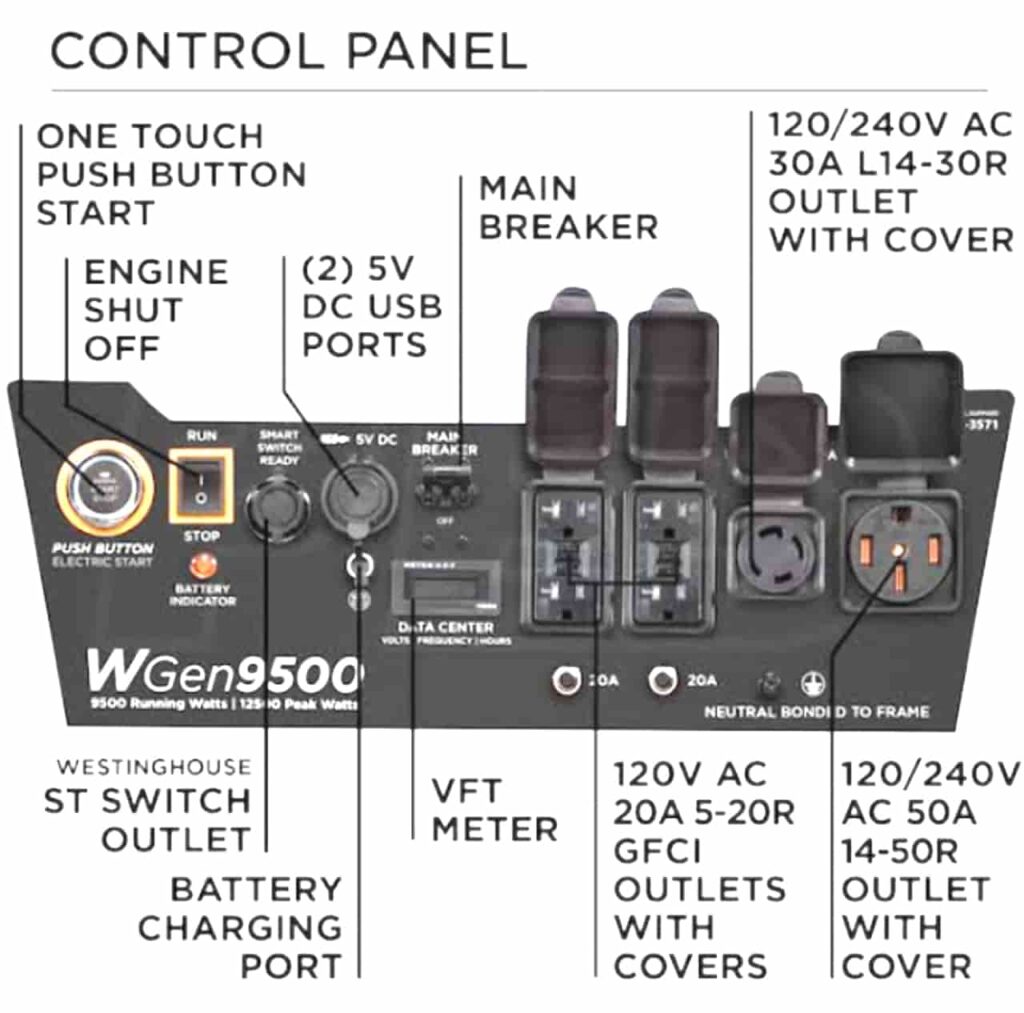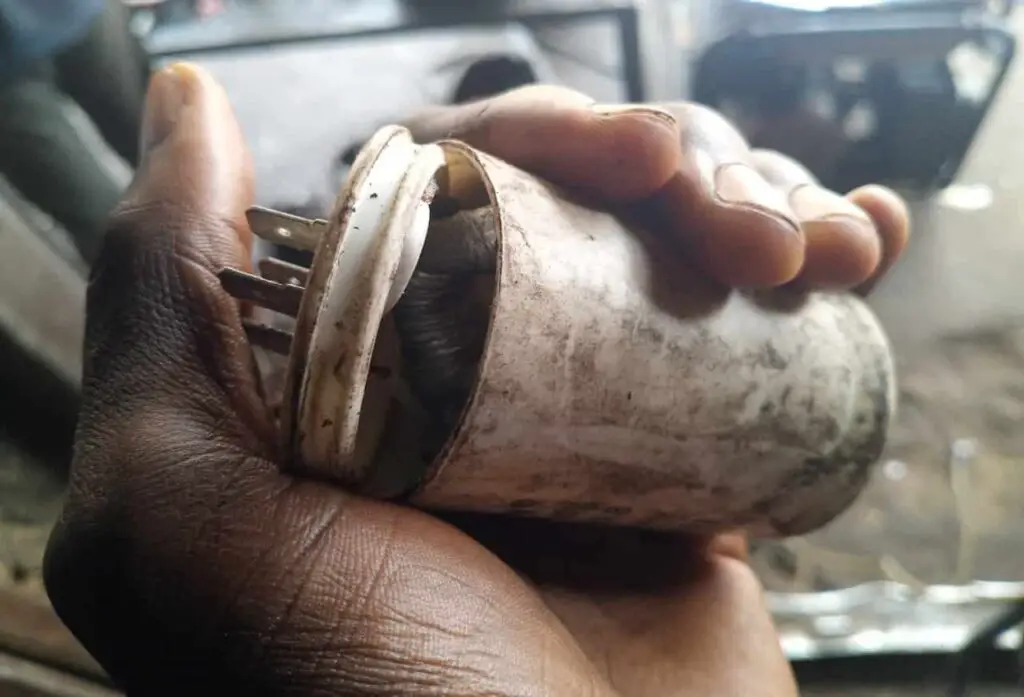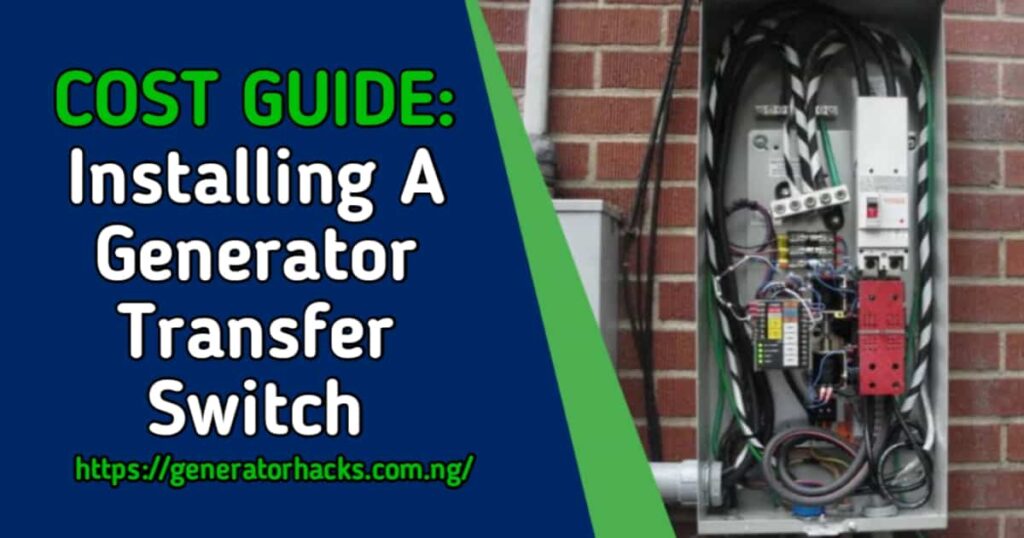As an Amazon Associate, we earn from qualifying purchases. This does not affect the price you pay or the quality of the products you buy. For more information, please read the full affiliate disclosure here.
We’ve all been there, hoping our generator would run during the blackout. Unfortunately, we are disappointed with the outcome — the generator runs fine, but there’s no power.
After working on different diesel and gasoline generators, we discovered the generator was running. Still, we had no power caused by various factors such as:
- Residual magnetism loss
- Tripped or defective circuit breaker
- Worn-down carbon brushes
- Bad capacitor
- Faulty AVR and many others will be listed in this article.
So, let’s look at all the causes and the reasons why your generator would run but produce no power.
Trouble with your generator? Get expert personalized troubleshooting tips tailored for you alone directly to your email. Contact us now for reliable support and practical solutions. Let’s fix it together – reach out today!
Why Does Your Generator Runs But No Power And How to Troubleshoot it
1. Residual Magnetism Loss
One of the common causes behind a generator running but having no power lies in the loss of residual magnetism.
Residual magnetism usually happens when there’s no magnetic field retained in the generator’s rotor, even when it’s not running.
Like how it may sound, the solution is manageable and easily fixed. Asking an electrician what might cause residual loss, they said:
“It usually happens when the generator hasn’t been used for some years after being disabled. Restoring the magnetic field is essential to make it bring out power again.”
When this issue happens, you can only restore the magnetic field and rekindle the electrical output to flash the generator alternator — the magnetic field will be corrected if flashed with a fully charged battery.
IMPORTANT READ:- How to Restore Residual Magnetism in a Generator: 3 Simple Ways + Videos
2. Tripped or Defective Circuit Breaker

Another reason why your generator will only produce power is if it has a defective circuit breaker. However, sometimes the circuit breaker might be tripped off, resulting in no power output, maybe because you overload the generator or there’s a contact in your connection.
As of the time of writing this article, a client complains his generator is not producing any power. Still, unfortunately for him, he couldn’t identify the circuit breaker that was tripped off.
Although it might be tripped off, sometimes due to it being defective. To find out, a multimeter can be used to test the breaker’s functionality thoroughly.
If found faulty, ensure you replace the breaker with a new one to resolve the problem and reignite the generator’s power supply.
3. Worn Down Carbon Brushes
If you are using an AVR generator, they usually come with carbon brushes. These brushes help ensure a successful transfer of electricity from the stator to the rotor and then to the load.
However, sometimes these brushes may wear down, disrupting the electrical flow in the generator and causing it not to produce power. But it’s an easy fix.
The best way to fix this issue is by inspecting the brushes. The brush is usually located at the coil area between the rotor and the stator.
After inspecting the carbon brush on your generator and finding faults, ensure you change the brush with a new one.
For a detailed guide on how to change your carbon brush depending on your generator brand and type, the video below explains the process.
4. Faulty Receptacle/Outlet

Sometimes, your generator might produce power as usual. Still, a bad outlet or receptacle might be the weak link responsible for withholding power from your generator to your load.
You might notice sparks from the outlet, burnings, smoke, etc. And sometimes lack of proper connection might also cause it.
Suppose you noticed any of these signs from your generator outlet/receptacle. In that case, it might cause your generator not to produce power. In that case, contact a qualified electrician to help replace it.
5. Defective AVR (Automatic Voltage Regulator)

Earlier, we talked about using brushes for AVR generators, also called dc generators. But in this case, this might cause the generator not to produce power.
An AVR on generators helps regulate the generator’s output voltage, ensuring it remains within safe limits.
However, just like we said, a malfunctioning AVR can result in an inconsistent or no power supply.
To fix this issue, ensure a thorough inspection of the AVR and replace it if needed.
ALSO READ:- How to Bypass Generator AVR: Complete Guide
6. Bad Capacitor

Lastly, some generators don’t use AVR but instead a capacitor. There was a time when someone brought his generator for repair. He said:
“The generator was working fine but suddenly heard a loud noise like a gunshot from the generator. Despite the noise, the generator was still running fine, but it seized its power.”
If you have ever experienced such a case from your generator, a faulty capacitor can hinder the generator’s ability to deliver a stable electrical output.
In that case, checking the capacitor and replacing it when needed can effectively boost the generator’s power production, restoring it.
ALSO READ:- Generator Running Under Voltage Fault Troubleshooting Guide
But What if, After Checking And Troubleshooting All These Faults, The Generator Still Not Produce Power?
This is another question to answer. When you have checked and troubleshoot all the courses listed above, and the generator still does not produce power, what is the cause?
In this case, we suggest you seek help from a qualified technician because the problem might be from the coil or alternator or the automatic transfer switch (ATS) itself.
The stator or the rotor might be faulty. Either it has a bridge in one of the wires, or it got burnt. Whatever the case, a qualified technician will diagnose and help you troubleshoot the problem.
ALSO READ:- Generator Repair Cost Estimation: How Much Does it Cost to Repair Generator?
Frequently Asked Questions
1. Is flashing a generator a risky process?
Flashing a generator is a safe process when done correctly. In short, it is safe. However, it involves working with electrical components, so you should always exercise caution and follow safety guidelines when flashing a generator.
2. Is it safe to inspect the rotor and stator myself?
If you have technical knowledge and experience, it can be safe. Still, it’s best to consult or seek assistance from a qualified technician if you need clarification.
3. When the generator fails to produce voltage, will you check?
For us here at Generator Hacks, when a generator fails to produce power, we will first check the receptacle or outlet with a multimeter to see if our connections or ATS might be the cause.
However, if we find out that the generator nothing is reading at the generator’s outlet or receptacle, then we move further in diagnosing the carbon brush, AVR or capacitor.
Final Thought
Generators running but without power can be frustrating and stressful, especially when the generator is instantly needed to power up your appliances or outdoor equipment.
However, it can be a simple fix, especially if the generator’s outlet or receptacle is the cause, or the circuit breaker, AVR, capacitor or wiring to the automatic transfer switch (ATS). And if you are not using an ATS, you should diagnose your wiring with a multimeter.
🔌 Generator Tools & Social Hub
Maximize your generator knowledge! Use our calculators and join our community for expert tips:
Stay connected for updates and exclusive content:
📘 Facebook Page 🐦 X (Twitter) 📌 Pinterest 🔒 Private Facebook GroupDiscover more from Generator Hacks
Subscribe to get the latest posts sent to your email.


